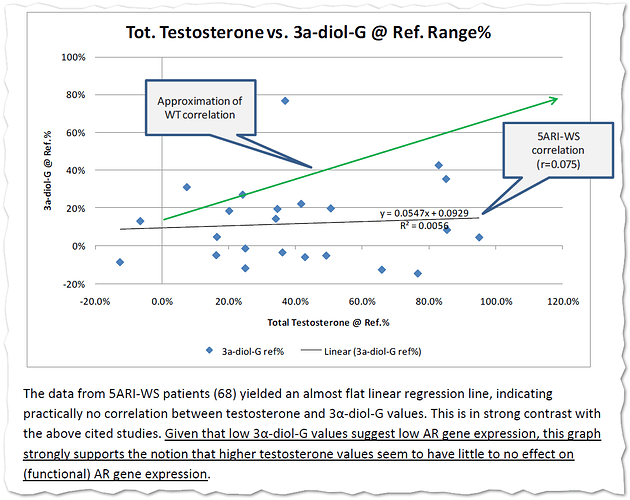Hi All,
I am new here and have been suffering PFS symptoms for about 2 and a half weeks.
This is just a thought and would explain some of the hormonal imbalances experienced by some. Feel free to shoot me down if this has already been discussed and evaluated.
It would make sense that guys are shown to have higher estrogen hormones and lower testosterone after their crash due to a reaction from the body to down regulate 5ar after experiencing abnormally high levels of DHT post finasteride cessation.
If 5ar is persistently downregulated then any testosterone produced from the testes would be unable to be effectively converted into DHT and hence will aromatise to estrogen. The result of this is hypogonadic alterations from the body to attempt to reduce estrogen levels caused by regular testosterone output being aromatised and hence why some men experience testis shrinkage.
Decreased testosterone levels would also explain loss of muscle mass and strength. I have noticed that those that have used TRT have not always recovered libido or erectile function but have gained some muscle mass, I would suggest this is to do with lack of conversion to DHT at the genital tissues which is why sexual symptoms persist. This could also explain why there are imbalances of neurosteroids related to 5ar in brain tissues, dysfunction of 5ar at these sites.
However this does not explain a failure of DHT replacement in treating ED issues.
Just some thoughts.

 I probably should have gotten banned from the forum for the tone of that post. Yes, glad those war days are over and that we found a more civil tone to discuss our views around this place.
I probably should have gotten banned from the forum for the tone of that post. Yes, glad those war days are over and that we found a more civil tone to discuss our views around this place.
